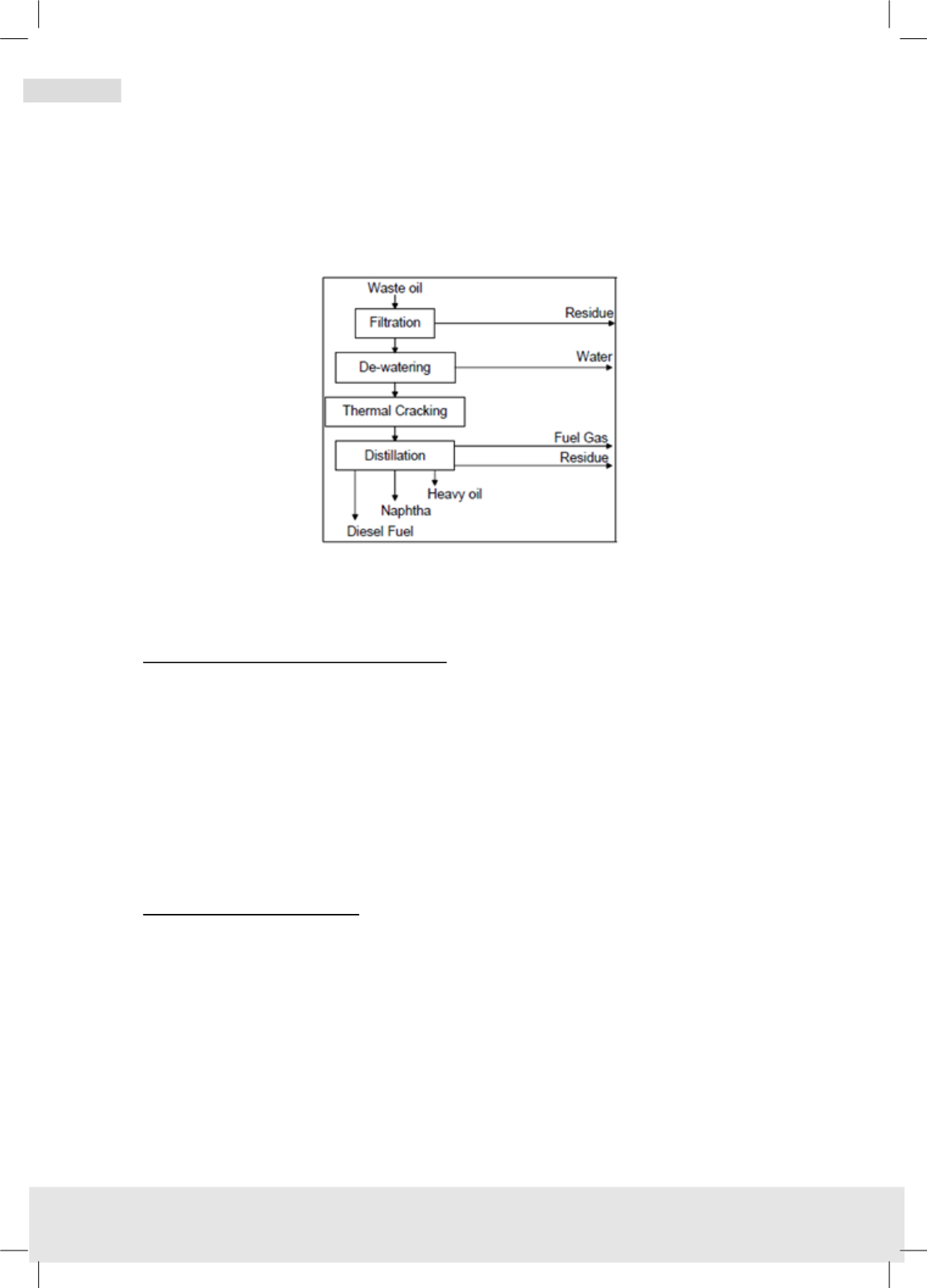

مجلة النفط والتعاون العربي
161
العدد
- 2017
أربعون
المجلد الثالث و ال
2016
أوابك العلمية لعام
�
ص لبحوث العلمية الفائزة بجائزة
�
عدد خا
68
58
Fig (18). This is the most used process and it involves a preflash followed by thermal
cracking performed in a furnace coil with soaking drums
4
to produce fuel oil and gasoil
with poor quality. The process is said to be suitable for small plants of 6 to 15 thousand
tons a year
4.
There are between 18
1
and 25
4
plants around the world with capacities
ranging from 300 tons to 12 thousand tons a year
4
.
Fig (18)
–
SOC process
–
Source 107
The Spring Oil Conversion Process:
A variety of this process replaces the cracking furnace with a rotary kiln and is
suited to larger facilities. A plant of 40 thousand tons a year was built in Belgium
in 2001 with other plants in Canada
4
.
There are many other prototype processes that have not been commercialized yet.
Other than burning for heat and energy and re-refining for base oil, used oil is
utilized for a number of lesser purposes such as road oiling in rural areas, asphalt
cutter and the like.
In the European Union:
In Europe, the importance of burning fuel oil is well demonstrated in the statistics.
Although CONCAWE
22
(which represents both lubricating oil manufacturers and
re-
refining plant operators) says that “Most have concluded that re
-refining is
‘better’ than burning, usually on grounds of energy efficiency” but countries
differ on this and some have “concluded that n
one of the possible disposal options
had a clear advantage and that the results might well differ from place to place
depending on local circumstances and the quantities of used oil available for
disposal.
22
”
















